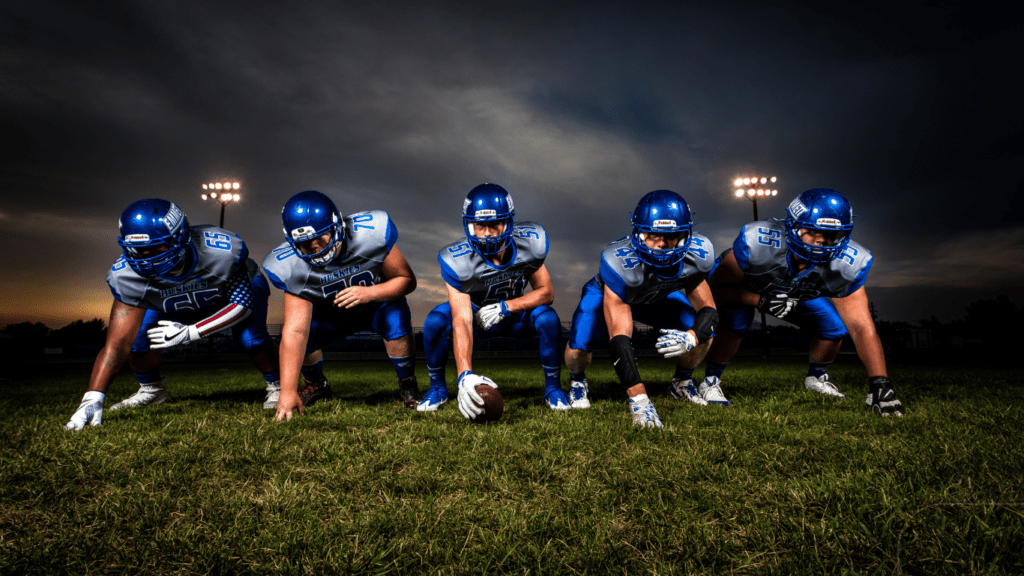As a former football player, I understand the exhilaration of the game but also the risks involved, particularly when it comes to concussions. In this article, I delve into the critical importance of concussion awareness and prevention strategies for football players. The impact of concussions on athletes can be profound, affecting not only their performance on the field but also their long-term health off the field.
Navigating the world of football while prioritizing player safety is a delicate balance that requires education, vigilance, and proactive measures. By exploring the latest research, guidelines, and practical tips, I aim to equip players, coaches, and parents with the knowledge they need to recognize, prevent, and manage concussions effectively. Let’s kick off this discussion on concussion awareness and prevention in football to ensure a safer game for all.
Understanding Concussions in Football
Concussions are traumatic brain injuries caused by a sudden blow to the head or body, leading to the brain moving back and forth rapidly. These injuries can disrupt normal brain function and have serious consequences if not managed properly.
What Is a Concussion?
A concussion is a type of brain injury that affects how the brain works. It can occur in various sports, including football, and is often referred to as a mild traumatic brain injury. The impact can lead to symptoms such as dizziness, confusion, headache, and in severe cases, loss of consciousness.
Signs and Symptoms of Concussions
Recognizing the signs and symptoms of concussions is crucial for prompt diagnosis and treatment. Common indicators include headaches, dizziness, sensitivity to light or noise, difficulty concentrating, and even emotional changes like irritability or sadness. It’s essential to be vigilant and seek medical help if any of these symptoms are present after a head injury during football activities.
The Importance of Concussion Awareness
Understanding the dire need for concussion awareness in football is crucial for safeguarding players’ well-being. Recognizing the signs and symptoms of concussions promptly can make a significant difference in athletes’ health and long-term outcomes.
- Impact on Players’ Health
Experiencing a concussion can have grave implications for a football player’s health. These head injuries may not only affect immediate performance but also pose risks to the athlete’s overall well-being. Ignoring or mishandling concussions can lead to severe complications, underscoring the vital role of awareness in preserving players’ health. - Long-Term Consequences
Failing to address concussions appropriately can result in enduring consequences for football players. From cognitive impairments to mental health issues, the repercussions of untreated concussions can be debilitating. Prioritizing concussion awareness is imperative in mitigating these long-term effects and ensuring the sustained health of athletes.
Current Prevention Strategies in Football
In football, various prevention strategies play a crucial role in minimizing the risks associated with concussions. Implementing advanced protective gear innovations and strict rules and regulations are pivotal in safeguarding players’ well-being.
Protective Gear Innovations
With modern technological advancements, innovative protective gear has become a game-changer in reducing the impact of concussions in football. For instance, specialized helmets designed to absorb and dissipate impact forces can significantly lower the risk of head injuries. These helmets are equipped with advanced materials and features that enhance player safety without compromising performance on the field. Additionally, mouthguards with protective elements help cushion blows to the jaw and reduce the transmission of forces that can lead to concussions.
Rules and Regulations to Reduce Risks
Stringent rules and regulations in football are essential for minimizing the occurrence of concussions on the field. Guidelines that focus on fair play, proper tackling techniques, and penalizing dangerous plays help promote a safer environment for athletes. Enforcing strict protocols for assessing head injuries during games and immediate removal of players showing concussion symptoms are critical steps in preventing further harm. Moreover, educating players, coaches, and officials about the importance of adhering to these rules is key to fostering a culture of safety and concussion awareness in football.
Enhancing Player Safety Through Training

Ensuring player safety in football is paramount, and effective training plays a crucial role in minimizing concussion risks on the field. By implementing specific coaching techniques and safe playing practices, players can be better prepared to recognize and respond to potential head injuries promptly.
Coaching Techniques and Safe Playing Practices
I prioritize coaching techniques that focus on proper tackling form and player awareness. By teaching athletes to tackle with their heads up and avoid leading with the helmet, we can significantly reduce the incidence of head injuries. Additionally, emphasizing the importance of respectful gameplay and fair competition enhances player safety and reduces the risk of concussions.
Educating Players About Concussion Risks
Educating players about concussion risks is essential for promoting a culture of safety and awareness within the team. I regularly communicate with my players about the signs and symptoms of concussions, encouraging them to report any head injuries immediately. By fostering open communication and ensuring players understand the serious consequences of concussions, we create a proactive environment that prioritizes player well-being.
Recent Advances in Concussion Research
Concussion research has seen significant advancements in recent years, shedding light on the long-term effects and the development of improved protective equipment for football players. I’ll discuss the key findings in these areas below:
Studies on Long-Term Effects
Recent studies have delved into the long-term consequences of concussions on football players. These research efforts have highlighted the potential risks of repeated head injuries, including cognitive impairment, chronic traumatic encephalopathy (CTE), and other neurological disorders. Understanding these lasting impacts is crucial in implementing effective prevention and treatment strategies in sports.
Development of Better Protective Equipment
Advancements in technology have led to the innovation of better protective equipment for football players, aiming to reduce the incidence and severity of concussions. Improved helmet designs, utilizing advanced materials and impact-absorbing technologies, have shown promising results in mitigating head injuries during gameplay. The continuous development of such gear is essential to enhance player safety on the field and minimize the risk of concussions.

 Danielo Fleischeronic is the visionary founder of Awesome Football Network, a premier destination for in-depth football coverage and analysis. His commitment to the sport is reflected in the platform's rich content, which includes breaking news, match analyses, and expert commentary. Danielo’s extensive knowledge and passion for football drive the network’s mission to provide fans with the latest insights and updates from around the world.
In addition to his role as founder, Danielo is also an accomplished article writer. His writing covers a broad spectrum of football-related topics, from tactical breakdowns to player profiles, offering readers a comprehensive understanding of the game. Through his work, Danielo aims to enrich the football experience for enthusiasts and professionals, making Awesome Football Network a trusted resource in the football community.
Danielo Fleischeronic is the visionary founder of Awesome Football Network, a premier destination for in-depth football coverage and analysis. His commitment to the sport is reflected in the platform's rich content, which includes breaking news, match analyses, and expert commentary. Danielo’s extensive knowledge and passion for football drive the network’s mission to provide fans with the latest insights and updates from around the world.
In addition to his role as founder, Danielo is also an accomplished article writer. His writing covers a broad spectrum of football-related topics, from tactical breakdowns to player profiles, offering readers a comprehensive understanding of the game. Through his work, Danielo aims to enrich the football experience for enthusiasts and professionals, making Awesome Football Network a trusted resource in the football community.
